A Guide to John Zorn
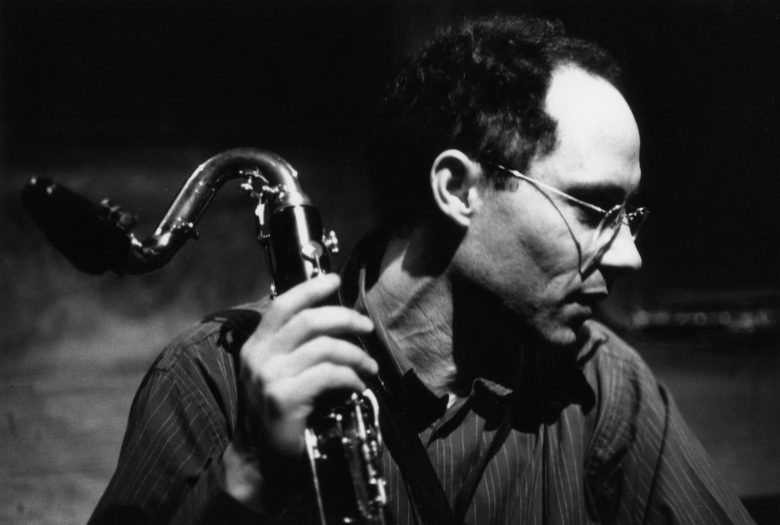
John Zorn
American musician, composer, arranger and multi-instrumentalist of Jewish origin. He does not avoid hundreds of different genres and styles in his work, which he can freely combine, creating for the listener a portal leading to the most exotic lands, previously inaccessible to anyone, hidden somewhere between the dimensions of the reality captivating to the ear. So far, Zorn has drawn inspiration from a variety of jazz, film, serious and electronic music, as well as from thrash, death metal, rock, punk, country and even hip-hop. He created music for a rock band, for a symphony orchestra, for big-band orchestras, for... Wind-making machine! WIND-MAKING MACHINE!
I decided to write this article about him, especially because of the huge number of publications signed with his name, the huge amount of them, can cause a lot of confusion among people unfamiliar with his work, and I think that in this infinite number of extraordinary albums, everyone over time is able to find something for themselves. I would therefore like this text to be primarily a compilation of his discography, or at least the most important elements of it...
I must say quite frankly at this point that, sitting down in this text, I feel like I am facing a really difficult challenge. I think that in order to delve a little deeper into it, it would seem that the practically immeasurable ocean of his artistic output with the help of one article will be quite difficult for me. Why?
Not least because Zorna has no framework, no article can be closed down, and that is because he, in turn, simply does not recognise the concept of frameworks, restrictions or borders. Have you never heard of Zorno? So you want to know who he is and what he creates? So I invite you to read it, because it is not so easy...
First of all, and what is very important - he is a musical genius and one of the greatest contemporary composers, and he can and do appreciate not only jazz lovers, but also people thirsty for a heavier sound, fans of film music, or a harsh, unrestricted avant-garde. They can find something for themselves ALL, provided they show a bit of courage, all because...
Well, Zorn has the ability to compose and play everything that really comes to his mind, combining at the same time, because why not, it is all still with everything else, often achieving a real inter-genre absolute. As a child brought up in a musical family, he became acquainted with classical music, listened to by his mother at the same time, drew from his father his deepening love for jazz with age, and in his free time listened to rock'n'roll of the 1950s with his older brother. At the age of fifteen, he was also interested in experimental music and avant-garde, and a year later he started to learn how to play the saxophone.
It is not surprising, therefore, that his work is so rich, that he has an overwhelming variety of styles and inspirations. As I have already mentioned, for Zorn the limitations never existed, they do not exist and for all the established borders, he can take us into the unusual, dark, as well as brutal, disturbing and romantic lands with his music. In the case of John Zorn's discography, there is also something to choose from, as he is one of the most prolific contemporary artists, with nearly 300 extremely diverse albums, and he has participated in dozens of various projects.

A breakthrough for the musician was the recording of his first great work. The Big Gundown saw the light of day of your 1985 year and scored the highest possible marks from many influential critics. Although it wasn't Zorn's first album at all, it was on this occasion that he decided to focus for the first time not only on the composition, arrangement and game, but also on the technical side of the work, which of course influenced the high quality of the recordings. The name of the album comes from a 1966 film of the same title directed by Sergio Sollimy, while the content of the album consists of radically transformed compositions by the composer of film music - Ennio Morricone. Zorna's arrangements for The Big Gundown are characterized by extraordinary fantasy and innovative approach to music.
This is a record that has fresh, good and intelligent ideas. It is realization on a high level, a work done by a maestro with great science-fantasy and creativity ... Many people have done versions of my pieces, but no one has done them like this!
Ennio Morricone - Italian composer, orchestrator, conductor, and former trumpet player. Creator of film music.
Beginnings
Soon after his premiere, The Big Gundown Zorn started working with many important jazz musicians. His unique and unique style of playing on the saxophone soon crystallized. His first greatest works in this genre were albums:
News for Lulu (1988) - Recorded with trombonist Georg Lewis and guitarist Bill Frisel, it refers to the classical era of hard bop. On the album you will not hear the rhythm section, only the mentioned guitar, trombone and saxophone.
Spy vs Spy (1989) - Extremely heavy, avant-garde album containing thrash/grindcore interpretations of classic Ornette Coleman compositions. Only for listeners with strong nerves who are familiar with Coleman's works.
Naked City (1990) - A real jewel, the canon of modern jazz. The album is once again musically full of rock and grindcore, but developing this concept with the influence of many other styles, these in turn intertwine in a surprising way within the sometimes very short, complex and intense tracks, creating something like a hardcore collage. This time 19 out of 26 songs are one hundred percent Zorn's compositions. Additionally, there were compositions by such musicians as Johnny Mandel, Ornette Colman again or, for example, free-jazz interpretations of theme from James Bond, Chinatown, or The Sicilian Clan (which was also featured earlier on The Big Gundown).
This is definitely an album that every music lover should know and which I recommend!

Hardcore punk
Naked City's album was just the beginning. Six months after the debut was released, the group responsible for its creation, which included Bill Frisell (guitars), Fred Frith (bass), Wayne Horvitz (keyboards), Joey Baron (drums) and Yamatsuki Eye (vocals) and of course John Zorn (tubes), presented the world with 42 extremely intensive music miniatures the album Torture Garden (1990).
Next albums of Naked City are Grand Guignol (1992), Heretic (1992), Leng Tch'e (1992), Absinthe (1993) and Radio (1993) (The last one is highly recommended to everyone)
The curiosity from me:
For a long time now my ringtone on the phone has been Snagglepuss from the debut album Naked City. Every time someone calls me, in one moment I stand on the verge of a heart attack.

Painkiller
The activities of Naked City, especially the second album of the band, aroused great interest among the members of the bands such as Agnostic Front or Napalm Death. Together with them, Zorn experimented a lot with music, and finally in 1991, together with Bill Laswell and Mick Harris from Napalm Death, he formed an experimental group called Painkiller.
Their debut album Guts of a Virgin (1991) is as unusual as it is full of chaos. It starts with a sound suggesting that the vocalist stepped with his bare foot on the Lego block lying on the floor, then it is only worse, harder and louder. Mick screams both with Zorn and his squeaky saxophone, but in the chaos and fervor of the musical struggle, all these screams are indistinguishable. Guts of a Virgin (and every subsequent album of Painkiller) are hard to call music at times, it is rather a certain "experience", but nevertheless intense and extremely interesting.
And again the curiosity:
In the Polish media, often on the occasion of recalling Zorn, a story is often quoted, when during a performance in the Warsaw Congress Hall in 2007, together with Painkiller, John Zorn, angry with the photographers, first played a piece with the group, which he gave the title "The smell of burning photographers", then put the saxophone down, threw himself at the reporters, spat them out, called them out, and finally ordered them to be led out by the security guards.
Moonchild Trio
This group was formed by Zorn in 2006 and includes Mike Patton, Trevor Dunn and Joey Baron. Thanks to this group 6 definitely worth recommending albums have been created so far. I particularly encourage you to listen to The Crucible (2008) and Ipsissimus (2010), where you will also hear the real guitar god Marc Ribot.

Radical Jewish Culture
Let us go back a little bit in time. So in 1993, when Zorn's desire to develop the Naked City group weakened, he decided to devote more attention to classical music. In this way, he quickly published one of his most unusual works, in my opinion.
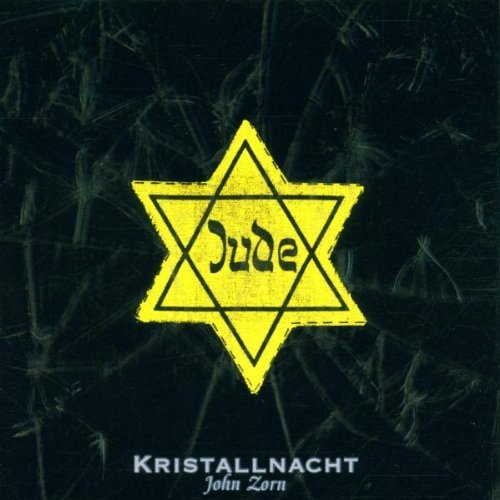
The album Kristallnacht (1993), as the name suggests, refers to the Night of Broken Glass, which took place in Germany from 9 to 10 November 1938. We should know that as a result of it, more than 1 000 synagogues burned down throughout the German state, thousands of houses were demolished, hundreds of Jews were murdered and more than 30 000 were imprisoned in concentration camps. John Zorn comments on the album saying that every Jew is obliged to face the Holocaust in his life, and the music on Kristallnacht is his personal testimony to the struggles with this terrifying spectre of the not so distant past. After just a few first sounds we are able to say that these are not words thrown to the wind, and the album Kristalnacht is just that - dark, heavy, painful and unrestricted experience, giving us the opportunity to commune, not only with the great genius of its creator, but also his struggle with the drastic subject matter of the work.
Masada Songbook
The album, Kristalnacht, was the first work in which John Zorn gave vent to his fascination with Jewish culture. Soon he came up with the idea of continuing to use this style. He took on the ambition of introducing Jewish music to the world in the 21st century by presenting a series of 100 pieces written during one year, which were to form part of the content of the so-called "first book of the Masada" in the future. Between 1993 and 1996, he worked on this extraordinary project and eventually composed 305 pieces erroneously - more or less 100 per year, as he had planned. The first 10 albums included in the book were recorded in the studio, they were named after the first 10 letters of the Hebrew alphabet, and their titles were also Hebrew. The next 7 releases, in turn, are live recordings, coming from such cities as Jerusalem, Middelheim, Taipei, Sevilla, Tonic or Sanhedrin.
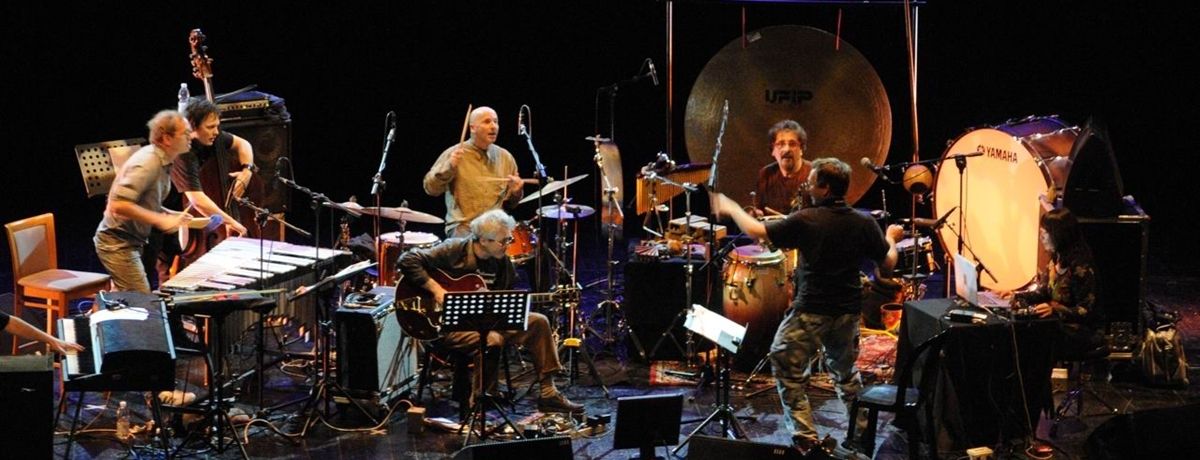
Masada Book Two - Book of Angels
In 2004, Zorn began composing the second book of the Masada. However, he said that 100 songs per year was far too little. Ten years after the completion of the first book, he said, "Would it be nice to write more melody? In doing so, he decided to pose another great challenge to himself. "Let's see if I can invent 100 songs a month instead of a year," he thought, and it quickly turned out that this was not such a problem for him. For 3 months he created a total of 316 melodies, which he sent to many friendly groups whose task was to make recordings. Book of Angels is a total of 32 albums, each of them taken from Judeo-Christian demonology and mythology. As in the case of the previous book by Masada, I think that each of these 32 albums is worthy of attention, especially because of the great variety of interpretations of the Master's compositions, from classical arrangements, through freejazz, rock (FENOMENAL MARC RIBOT), electronic, to a cappella.
A strong hearing is needed:
Masada String Trio - Azazel (2005)
Uri Caine - Moloch (2006)
Mark Feldman & Sylvie Courvoisier - Malphas (2006)
Erik Friedlander - Volac (2007)
Marc Ribot - Asmodeus (2007)
Bar Kokhba Sextet - Lucifer (2008) (The whole album is available on YouTube)
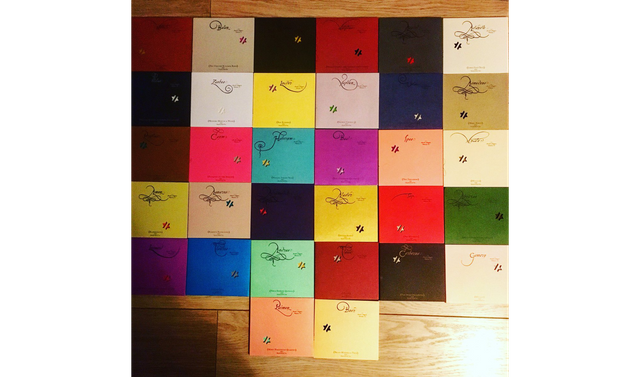
Masada Book Three - The Book Beriah
In 2009, John Zorn completed his third book, The Book Beriah, but it wasn't until 2014 that it was presented live. The third book contains 92 songs, so Masada's 3 songbooks are made up of a total of 613 songs, the number of which corresponds to the number of the commandments of good life contained in the Torah.
The activity of John Zorn led to the formation of the musical movement Radical Jewish Culture, the aim of which is to introduce Jewish musical culture into the contemporary framework. The most important representatives of the movement are David Krakauer, Marc Ribot, Anthony Coleman and Frank London.
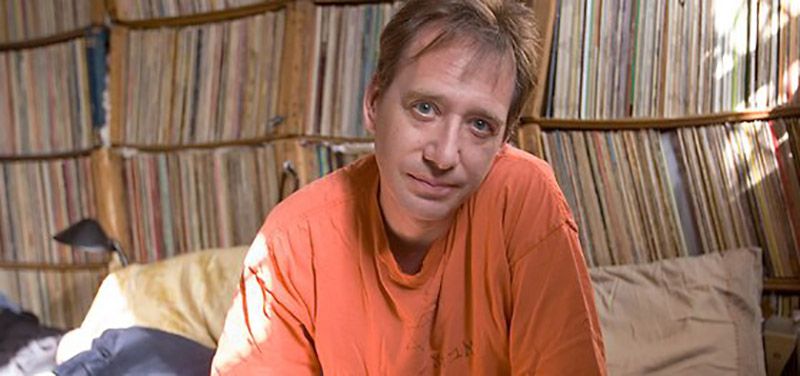
Music Romance Series
Another very important series by John Zorn is the Music Romance series, which began in 1998 with the album Music For Children (1998). This is one of those Zorn's albums, which despite many light and pleasant moments, I recommend to people with slightly stronger nerves. It's this record that contains more than 20 minutes of track played on wind machines. This album also includes 3 phenomenal songs played by Naked City, including a brilliant fourth position under the title Bikini Atoll.
Soon he released an equally good, once again combining delicate jazz sound with crazy hardcore punk album Taboo & Exile (1999), developing a little the formula of the previous release, also a lot of classical influences.

However, the third album in the series - still the greatest bestseller in Zorn's discography - brought a great surprise and a considerable revolution - a delicate, subdued and at the same time extremely engaging The Gift (2001). I recommend this music to everyone. It's hard to find a more pleasant, relaxing and at the same time interesting creation. As I mentioned, this album is very light, free from avant-garde impulses of Zorn, slightly rocky, but it's impossible to say that it's not ambitious.
Eight years after the premiere of The Gift, Zorn introduced The Dreamers to the world. This in turn released in 2008 and 2009 as pleasant and perfect as The Gift albums The Dreamers (2008) and O' o (2009). In 2010, the group also recorded in their own style one of the albums to the other of Masada's books entitled Ipos (2010) and in 2011 the beautiful A A Dreamers Christmas (2011) containing 9 charming interpretations of the most popular Christmas songs - something wonderful!
As I mentioned earlier, I recommend all of The Dreamers' works, as well as The Gift, to anyone who is looking for something more in music. Who knows, maybe these albums will become for you, as well as for me, something to which you will want to return in your free time!

Film Music
Let's now come back for a moment to 1985 and the album The Big Gundown. Zorn did not hide the fact that observing the enormous success of this release, he was sure that it was a matter of time when the first filmmakers decided to cooperate with him. Of course he was not mistaken. Although Hollywood did not begin to bang on the music through the doors and windows, it aroused considerable interest among independent cinema creators with its music. Thus, in 1986 John Zorn created the soundtrack for the short film "White and Lazy" directed by Rob Schwebber. His first album from the Filmworks series contained compositions created for this production, as well as two others: "She Must Be Seeing Things" by Sheil McLaughlin and "The Golden" by Boat Raúl Ruiz.
What is important, it can be said that the recordings prepared by Zorn for various film productions were for him a kind of testing ground for many years, because it was a part of the recordings from Filmworks I: 1986-1990 (1992) that could be considered the first to be made by the line-up that was to form soon Naked City. In the future, the first recordings of Masada appeared at Filmworks III: 1990-1995 (1996), Masada String Trio was first heard at Filmworks VIII: 1997 (1998), and at Filmworks XXII: The Last Supper the musician presented his experiments with the group a capella for the first time.

When Zorn's film music gained popularity, he could already afford to choose from numerous proposals only those projects that he considered interesting. What, however, did he consider to be such? Filmworks V: Tears Of Ecstasy (1996), for example, contains the soundtrack of the... A gay porn sado-maso film! He also created many of his scores for documentary films related to Jewish culture..
As in the case of the previous series, I find it difficult to point out weak points in this position. Definitely for many reasons Filmworks is the series I like the most in the master's discography, but I will try to propose a few albums for the start:
Filmworks VIII: 1997 (1998) - Album containing soundtrack from "The Port of Last Resort", documentary film directed by Joan Grossman and Paul Rosda, telling about experiences of Jewish refugees in Shanghai and from "Latin Boys Go to Hell" directed by Ela Troyano. As I mentioned earlier, this album was the first one recorded by Masada String Trio with the participation of Marc Ribot (guitar of course) and Anthony Coleman (piano).
Filmworks X: In the Mirror of Maya Deren (2001) - The album presents a score for a biographical film directed by Martina Kudlácek, describing the life and work of Maya Deren, a pioneer in the field of American avant-garde cinema.
AllMusic describes the album as such:
In the Mirror of Maya Deren is Zorn's most compelling work for film yet. As a conceptualist, Zorn is not to be outdone - he sees things in total, and this score is one piece, full of segue, room, drift, and dream. Deren would have been at the very least pleased, and that is as high a compliment as can be paid to this wonderful work by one of the most prolific, poetic, and profound composers.
Putting a well-deserved note of 4,5/5.
Filmworks XI: Secret Lives (2002) - The album contains a soundtrack composed by Zorna from "Secret Lives: Hidden Children and Their Rescuers During WWII" - a documentary about Jewish children in hiding during the World War II. The music from the album was created with the guest participation of Vanessa Saft on vocal and Jami Saft on piano. It's definitely one of my favorite Zorn records.
Filmworks XII: Three Documentaries (2002) -The album was released the same year as Filmworks XI, with music composed by Zorn to three other documentary films. To "Homecoming" by Charles Dennis, describing the beginnings and evolution of Performance Space 122 in New York, to "Shaolin Ulysses", describing the lives of Shaolin monks living and training in the United States, and to "Family Found", describing the life of photographer and graphic artist Morton Bartlett directed by Emily Harris. I guess it's easy to guess that it's hard to get a second such diverse release in this series.
Filmworks XIII: Invitation to a Suicide (2002) - With black comedy music directed by Loren Marsh. The story tells the story of a man who sells tickets for his own suicide in order to save his father's life. Of all the Zorna albums in the Filmworks series, this one is by far the lightest and most catchy. I recommend it to everyone!
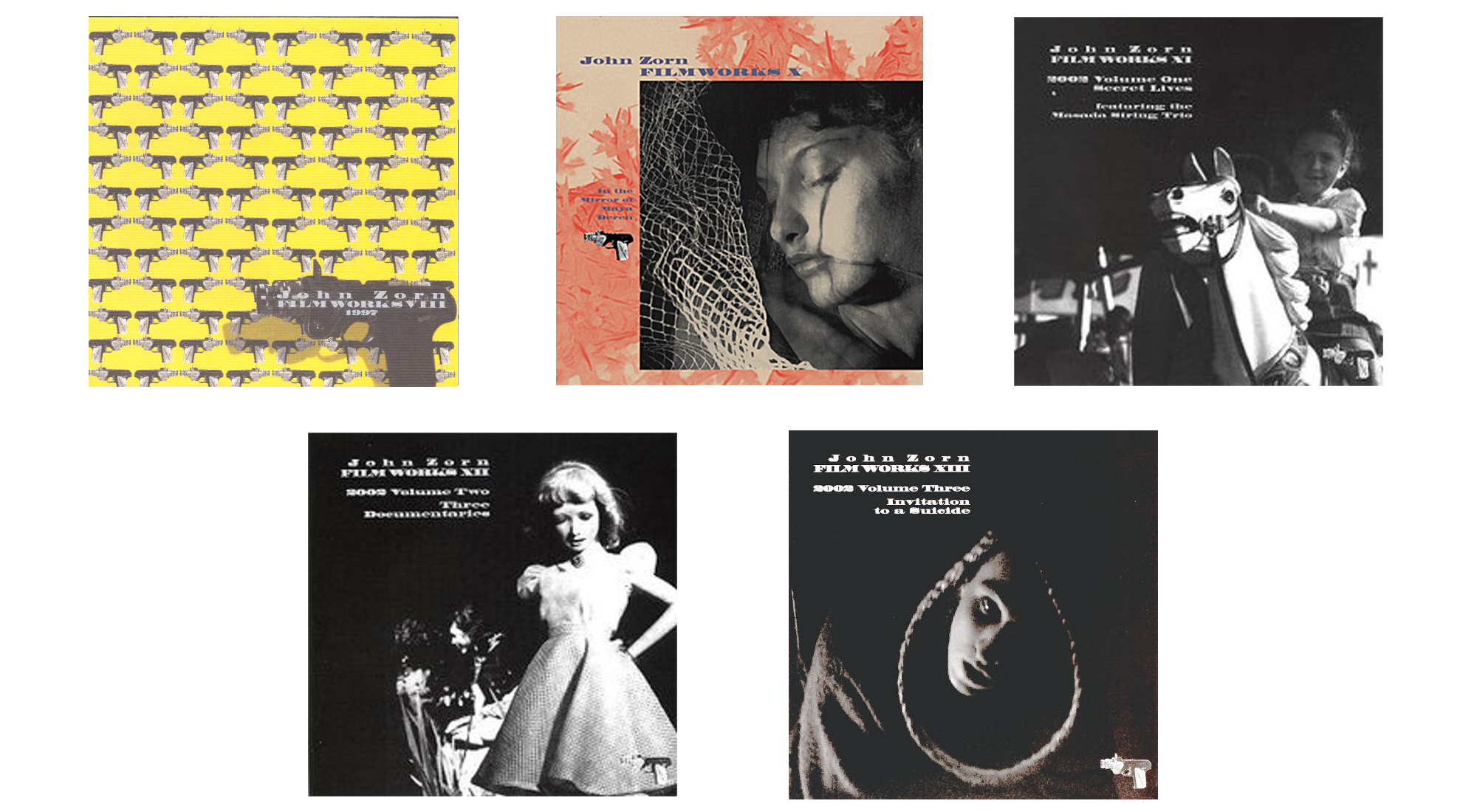
Filmworks XIX: The Rain Horse (2008)- contains music that Zorn wrote and recorded for the animated short film The Rain Horse directed by the Russian animator Dmitri Geller. It impresses with a certain kind of minimalism, as it was played by only three musicians. The composition of Filmworks XIX is as follows
Greg Cohen - bass
Rob Burger - piano
Erik Friedlander - cello
Filmworks XX: Sholem Aleichem (2008) - Album presenting music for a documentary about a 19th century Jewish writing - Salomon Naumovich Rabinowicz (author better known as Shalom Aleichem, which in Hebrew means "peace with you"). Also this album remains one of my favourites from the whole series.
Filmworks XXI: Belle de Nature (2008) - Beautiful, very ethereal and very popular album with music composed for Maria Beatta's Belle de Nature and the documentary about the Rijksmuseum. This work, which everyone should definitely listen to at least once, is truly unusual.
In the end, John Zorn released a total of 25 albums from the Filmworks series in 2013, stating that the series will no longer be continued.

Tzadik Records
Let's go back a little bit in time to the first album of Filmworks, or rather to the first soundtracks to movies composed by Zorn. In 1990 the film maker Walter Hill attracted his attention by offering him music for his film Trespass. Interestingly, Zorn's score was not finally used in the film. Nevertheless, Zorn received a significant commission from Walter Hill for his recordings, for which he... In 1992 he created his own recording studio. It was here that the first albums from the series Filmworks were created, among others Filmworks II: Music for an Untitled Film by Walter Hill, as well as all the other albums that have appeared since then under the name of Zorna disc. In 1995, a single studio was transformed into a fully-fledged record company.

The Tzadik label, which in Hebrew means "fair", was created primarily to promote musicians creating all kinds of experimental and avant-garde music. It was her who released the majority of John Zorn's albums and his friends' musicians. The editions of the Tzadik label are divided into series:
The Archival Series - It contains only reissues of John Zorn's albums written before 1993.
The 50th Birthday Celebration Series - 11 albums containing recordings from John Zorn's concerts of September 2003 as part of a monthly retrospective of his artistic achievements.
The Composer Series - It contains Zorn's music for classical groups and the music of many other composers.
The Radical Jewish Culture Series - It includes music by contemporary Jewish composers.
The New Japan Series - Includes Japanese underground music.
The Film Music Series - Includes film music from other musicians
The Oracle Series - It promotes women performing experimental music.
The Key Series - It presents famous creators of avant-garde music.
The Lunatic Fringe Series - Includes all music released by Tzadik, which is not part of the other series.
The Spotlight Series - It promotes new bands and projects of young musicians.
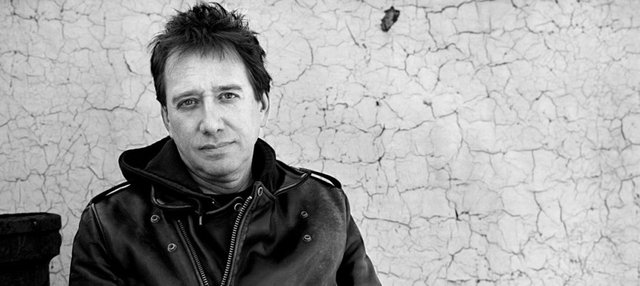
Compulsory listening
I believe that all the information presented in this article will be an excellent base for entering the extraordinary world of John Zorn's music, to which I would like to encourage everyone! At the very end I will allow myself to prepare a "mandatory listener", i.e. a set of five albums by John Zorn, which I managed to find in full on YouTube. Not all of them are perhaps the most important ones in his output, I have chosen them altogether in a rather random way, but surely each of them remains important in his own way. These are the following
Naked City - Naked City (1990)
Bar Kokhba Sextet - Lucifer: Book of Angels Volume 10 (2008)
The Dreamers - O'o (2009)
John Zorn - Kristallnacht (1993)
John Zorn - Filmworks XII (2002)
I wish you a pleasant listening and thank you for your attention!

Sources:
http://roulette.org/artist/john-zorn/
https://svyazalamuzyka.wordpress.com/2014/03/24/marc-ribot/
http://neworkscalgary.com/bio-john-zorn/
https://en.wikipedia.org/wiki/Music_for_Children
https://www.discogs.com/artist/99731-John-Zorn
http://www.bbc.co.uk/programmes/b039bfpp
http://www.theneedledrop.com/features/2015/7/20-years-of-tzadik-favorite-releases
Szacunek za włożoną pracę! Kawał porządnego materiału! 👊
Mega profesjonalnie, wyczerpująco i na prawdę ciekawie.
John Zorn & Naked City with Eye - NYC live
To nagranie to jakiś totalny odjazd! Wszystkie te style, dźwięki, efekty - miazga! Zabieram się za pozostałe! 😁
amazing post ! very detailed and well researched :D good flow and the links are not only educational but also enriching :D
<3
A great and professional article. I also love music!👍😎
Very nice article. I tried listening to the first album I found on Google Music this morning, and had a difficult commute... It was Cobra. They seem to have News for Lulu among a few others, I will give them a try.
What a magnificent work! John Zorn is musical genious